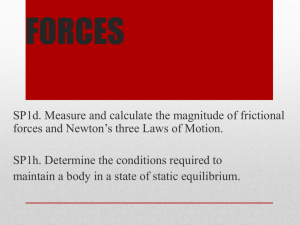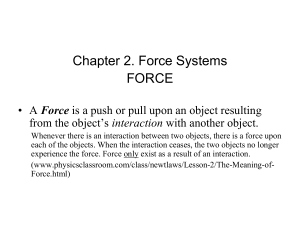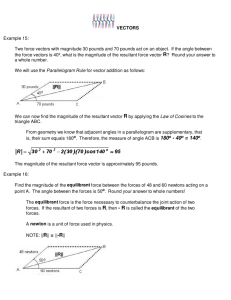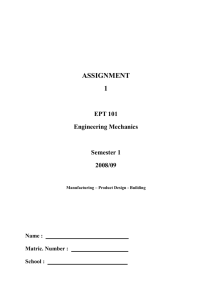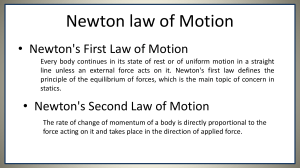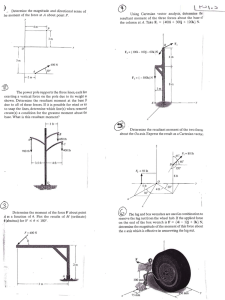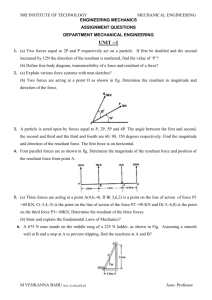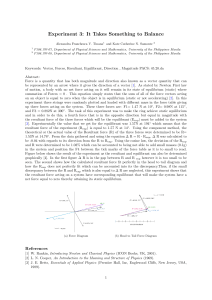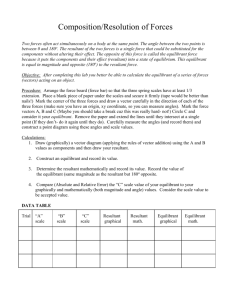Composition and Resolution of Forces Worksheet
advertisement
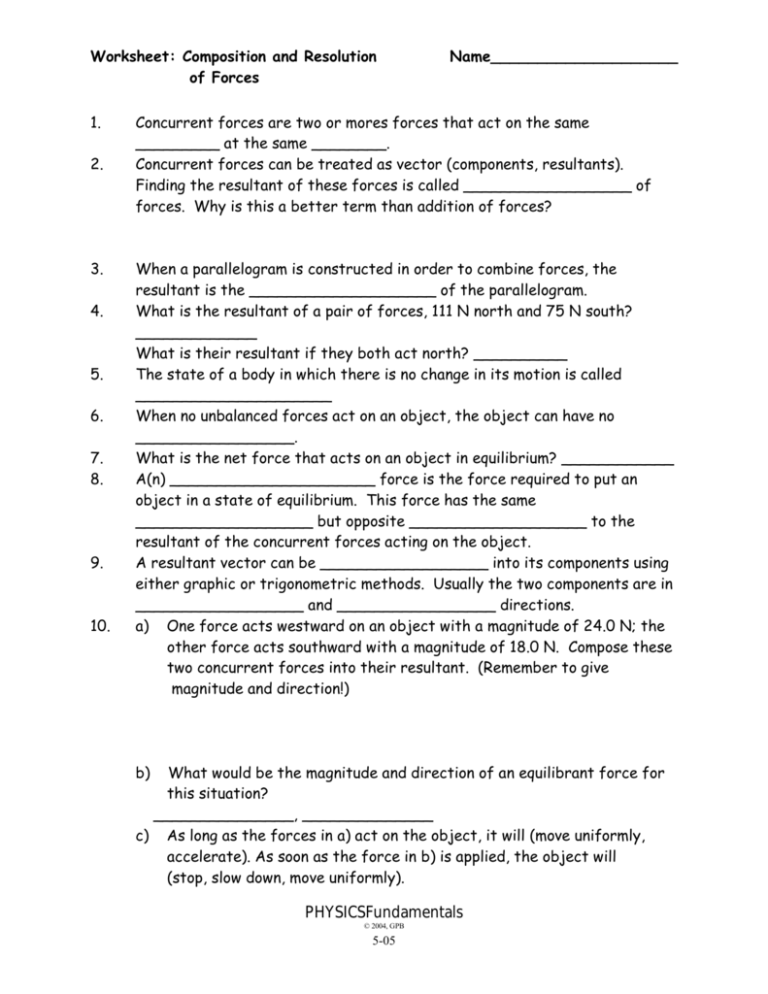
Worksheet: Composition and Resolution of Forces 1. 2. 3. 4. 5. 6. 7. 8. 9. 10. Name____________________ Concurrent forces are two or mores forces that act on the same _________ at the same ________. Concurrent forces can be treated as vector (components, resultants). Finding the resultant of these forces is called __________________ of forces. Why is this a better term than addition of forces? When a parallelogram is constructed in order to combine forces, the resultant is the ____________________ of the parallelogram. What is the resultant of a pair of forces, 111 N north and 75 N south? _____________ What is their resultant if they both act north? __________ The state of a body in which there is no change in its motion is called _____________________ When no unbalanced forces act on an object, the object can have no _________________. What is the net force that acts on an object in equilibrium? ____________ A(n) ______________________ force is the force required to put an object in a state of equilibrium. This force has the same ___________________ but opposite ___________________ to the resultant of the concurrent forces acting on the object. A resultant vector can be __________________ into its components using either graphic or trigonometric methods. Usually the two components are in __________________ and _________________ directions. a) One force acts westward on an object with a magnitude of 24.0 N; the other force acts southward with a magnitude of 18.0 N. Compose these two concurrent forces into their resultant. (Remember to give magnitude and direction!) b) What would be the magnitude and direction of an equilibrant force for this situation? _______________, ______________ c) As long as the forces in a) act on the object, it will (move uniformly, accelerate). As soon as the force in b) is applied, the object will (stop, slow down, move uniformly). PHYSICSFundamentals © 2004, GPB 5-05 Worksheet: Composition and Resolution of Forces Draw diagrams for all questions. Name____________________ 11. a) What is the resultant of these forces acting on the same object? 6.0 N, West; 1.2 N, East; and 7.2 N, North b) What is the equilibrant force for this situation? 12. Find the magnitude and direction of the equilibrant force for these two concurrent forces: 13.5 N, E and 32.0 N, N. 13. A person pulls a rake with 152 N of force along the handle. The angle between the handle and the ground is 35.0o. Determine the magnitudes of the horizontal and vertical components of this force. 14. A child pulls a wagon along level ground. The handle with which she pulls the wagon makes an angle of 20.0o with the ground as the child pulls with a force of 78.0 N. What are the components of the force? PHYSICSFundamentals © 2004, GPB 5-06

